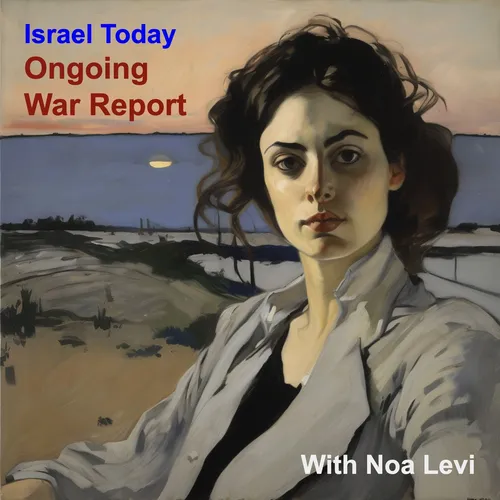Israel Today: Ongoing War Report - Update from 2025-09-15 at 07:07
- Author
- Noa Levi
- Published
- Mon 15 Sep 2025
- Episode Link
- https://www.spreaker.com/episode/israel-today-ongoing-war-report-update-from-2025-09-15-at-07-07--67761675
HEADLINES
Gaza ceasefire flails as civilians bear brunt
Iran escalates regional chess with proxies
Yemen Houthis threaten shipping lanes and civilians
The time is now 3:01 AM in New York, I'm Noa Levi and this is the latest Israel Today: Ongoing War Report.
This is a 3:00 a.m. world update on the evolving crisis across Israel and its neighbors, presented in a steady, chronicle style. The underlying thread remains a fragile balance between force and diplomacy, with regional actors recalibrating positions as campaigns continue and foreign capitals weigh their next steps.
Across the spectrum of conflict, the ceasefire arrangement in the area remains fragile. While some pauses hold, a wide gap remains between the security needs of Israel and broader regional concerns. In parallel, allied capitals in Europe and the United States watch closely for signs that combat will flare anew, or that political momentum can push toward a sustainable pause that respects both security demands and humanitarian constraints.
In Gaza, Hamas continues to hold hostage captives in homes and tents above ground as part of its effort to complicate the Israeli offensive. Israeli forces press operations aimed at dismantling militant infrastructure, even as battle lines shift and civilian displacement climbs. Officials in Israel say hundreds of thousands of Gaza residents have moved south since the campaign began, with the latest assessments suggesting around twenty thousand people shifted location overnight. Humanitarian workers warn that the redeployment of civilians complicates relief efforts and heightens risks for those who remain in the city’s disaster zones. Within Gaza City, discussions of a potential “legitimacy ambush” persist in international circles, as militant groups strive to exploit civilian casualties to pressure the international community to call for a halt. The human impact remains stark as families seek safe passage and aid corridors, while military planners emphasize the objective of degrading militant networks and deterring future aggression.
In the broader arena, Iran’s regional posture continues to shape calculations. Tehran’s security apparatus has signaled that a substantial gathering of Islamic and Arab states should take firm, collective measures against what it terms the Zionist threat, urging unity and concrete steps rather than mere rhetoric. That stance comes as Iran’s proxies in various theaters face intensified pressure, with regional actors reassessing capabilities and loyalties in light of Israeli and allied actions. In Lebanon, Hezbollah’s presence and activities remain a point of concern for Israel and its supporters, though observers note that Lebanese authorities and security forces are seeking ways to curb illicit activity and reduce spillover into the regional conflict. At the same time, Syria’s governance and security landscape is evolving in ways that reflect changing power dynamics, with attention focused on the influence and reach of external actors in the conflict’s northern theater.
In Yemen, Houthi forces continue attacks from across the Red Sea and the interior, maintaining pressure on regional shipping routes and strategic targets. While gains and setbacks are reported in various strikes and defensive efforts, the campaign’s broader effect on civilian life and regional stability remains a focal point for international diplomacy. The humanitarian dimension of these developments remains acute, as aid organizations underline the risks posed by ongoing hostilities to vulnerable populations.
On the diplomatic front in Washington, conversations surrounding Gaza and regional security continue to resonate. United States lawmakers and the administration have discussed the aftermath of recent regional actions and the path toward a truce in Gaza. In a broader frame, officials emphasize that the United States does not...
